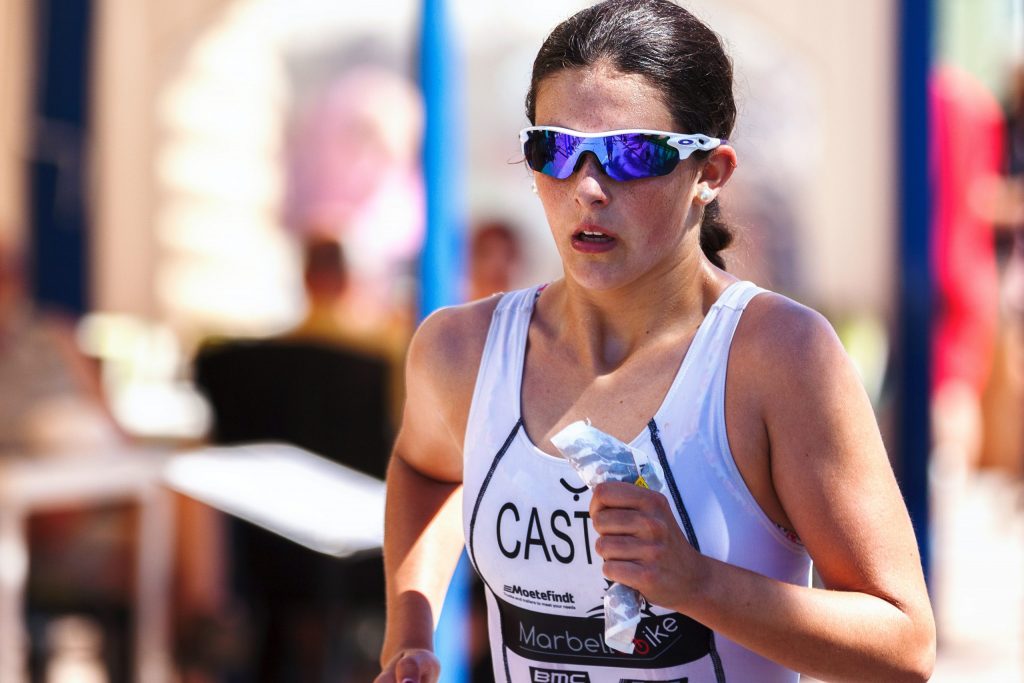
- December 12, 2021
- 12:00 am
- No Comments
Heat training
As we start to experience our hottest months in Australia, some individuals are starting to feel the effects of heat and humidity. This article provides a summation of the latest evidence-based options for heat training and preparation for racing in the warmer months.
Most athletes can train in the heat over a normal summer but then find they come unstuck when it comes to competing in hot conditions, especially when there are seasonal differences between where they train and then compete.
As a classic example of an athlete who did not perform well in unexpected hot conditions, I learnt some brutal lessons from heat stroke in the 2006 Commonwealth Games and the not so delightful conditions of the Beijing 2008 Olympics. Most of us have seen the horrific images televised during hot championships… the examples of athletes collapsing are endless, and the ill effects of heat are not limited to the marathon but extend to most endurance sports such as cycling, race walking, triathlon and ironman triathlons. Unfortunately, most major championships are held in warm conditions which are ideal for boosting attendance numbers, and sprint and power-based sports performances, but not so good for the endurance athlete.
Research to clearly define the “best way” to undertake heat preparation is lacking. Most recommendations are based on the lessons learned from athletes attending previous games (Olympics, Commonwealth, and IAAF World Championship Games) rather than large-scale studies. We should see further progress in recommendations for sports performance in extreme conditions in the coming years, however, good suggestions are available to trial now. These suggestions will need to be adjusted to suit individual needs.
Although you may not be aiming to compete at a championship level, you can still draw on the techniques used by elite athletes to improve performance. If you plan to compete in hot conditions, give yourself every opportunity to perform at your best and enjoy your race by following some of these simple guidelines.
TOP 10 TIPS FOR OPTIMISING SPORTS PERFORMANCE IN THE HEAT
1. Know your predicted event conditions. Researching the average event conditions over the previous years can help you better understand what you are likely to face. Remember there are multiple factors to consider that influence body temperature and how well you will cope with the heat. Some of these factors include humidity, solar radiation from direct sunlight, clothing, diffused radiation off clouds and road surfaces, wind speed and expected outside temperatures. Outside temperatures are usually taken in the shade so the actual perception of how hot it is, can change significantly.
2. Know your sweat rate. Get your sweat and sodium rate loss checked properly. You can do this at a sweat lab for approximately $200 or with a home-based test kit costing around $99. It is recommended athletes test fluid and sodium levels before and after heat acclimatization. Another simple option that gives you a basic measure is completing a basic fluid loss count yourself. Weigh yourself before and after you do an exercise session of at least 60 minutes in warm conditions. Subtract the amount of any fluids taken during this session. This gives you an estimate of how much fluid you lose per hour.
3. Keep your fluids up. If you are competing in the heat you will lose more fluid than in cooler months. Fluid losses of over 2% of your body weight reduce sports performance. When athletes reach this 2% threshold, increased fatigue, reduced endurance, reduced motor skills and mental function, and declining motivation can be observed. Studies also show heart rate increases by 3-5% for every 1% dehydration. Drinks including electrolytes such as sodium and magnesium are important and beneficial over water, especially in events with 90 minutes duration or more. Drinking to thirst is advised for shorter events under 90 minutes duration and events with low intensity in cooler climates. A general rule of thumb is to aim to sip 250ml of fluids every 20-30mins of an event of high intensity over 90 minutes.
Enter a race well hydrated and then remain as well hydrated as possible during a race.
4. Replenish fluids. Drinking 150% of the fluid lost during an event within 2 hours is also key to a speedy recovery. This does not mean you should skull huge quantities of fluid. Imagine yourself as a plant. If you tip large amounts of water on a plant, the water just runs through but if you water the plant gradually, the roots have time to absorb the fluid and nourish the plant. Humans are the same, so ideally sip fluids slowly and continuously in combination with consuming high-water content foods such as watermelon in the 2 hours immediately after your event
5. Heat adaptation. Studies reveal it is not uncommon for core body temperatures of elite athletes to reach 41c during races. This naturally coincides with a drop in pace. In many situations, high core temperatures are unavoidable however the time at which athletes reach this level of temperature can be delayed, therefore minimising the time at which their pace will drop in a race and reduce the risk of unfavourable side effects such as heat stroke. Some of the most widely used protocols to help athletes prepare for performance in heat climates include heat acclimatisation and heat acclimation. Both of these techniques improve the athletes’ physical responses and overall ability to cope with heat exposure. Heat acclimatisation involves adaptations in response to heat stress in a controlled environment such as a heat chamber (typically under supervision) over the course of 7 to 14 days.
Heat acclimation is a similar process but in a natural environment such as training in a warm climate such as Cairns. Some of the positive adaptations that occur to heat adaptation/ acclimation include reductions in heart rate, body and skin temperature, and perceived level of exertion/ effort. An increased sweat rate and sweat onset also help you to cool down more efficiently. Reduced sodium loss and blood pressure are also observed. These changes equate to an athlete’s increased ability to perform in the heat.
Undertaking 70-80 minute sessions in heat chambers a few times per week as part of a well-structured training plan can aid in heat adaptation. This is great for those with access to heat chambers but what about everyone else?
Homebased options do exist like hot rooms, hot baths, and saunas. Athletes can also create a DIY heat chamber in a bathroom or laundry by switching on the heater and using a treadmill or stationary bike.
Using a humidifier in this room will also create humidity. Heat acclimatisation protocols are individualised and vary greatly. Some studies suggest completing 12 x 30 minute sessions in a hot sauna over a 3 week period while others with 10 continuous days of 1 x 90 minute heat session/ day showed increased VO2 max and endurance performance. Having a base level of fitness prior to starting heat exposure will help the process along as you will already have an increased sweat rate.
Following the heat acclimatisation phase, spending 10-14 days just prior to your event in a similar environment to the one you are competing in will facilitate heat acclimation. This will also help you adjust to a different time zone if applicable. Ensuring you have enough time to climatically adjust and have adequate support during this tapering phase, is really important.
6. Avoid altitude and heat in combination. If you are planning on doing altitude training, don’t forget to leave plenty of time between leaving altitude and commencing heat preparation to allow your body to recover. Ideally this window will be 21 days. Avoid combing altitude and heat training. Studies suggest mixing heat and hypoxia at the same time, does not provide beneficial outcomes.
7. Pre-cooling. Although your core temperature will rise during the course of the event, there are various methods that can be used to keep your core temperature lower for longer. Ice vests are used by elite athletes but you could make your own version using ice packs in towels or a Camelbak during the warm up. Fans, cold towels and cold baths in a bucket are makeshift options. One of the methods used in Beijing involving sipping an ice slurpy before the race as we warmed up. This is suggested to reduce the body’s core temperature by up to 5%. Mixed methods of a few of these options seem to be most effective. Trial what can be tolerated and what works for you prior to your event.
8. Keeping cool during the event. Some of the more widely used tricks to stay cool during the event include using facial spray, overhead mist sprays, and cold-water sponges to cover as much skin surface with cooling water. Cool packs tied around the neck or in socks can also be helpful. Sunglasses and wearing a visor rather than a hat can also help keep the glare down but allow the sweat on your head to evaporate and feel the cooling effects of cool water when tipped over the head. If you have the luxury of putting out your own drinks, keeping them in some form of cooler or stubby holder can also keep them cooler for longer. Freezing the drinks that will be out in the sun for over an hour can also be helpful.
9. Adjust your race to the conditions. Planning for the heat in terms of running within your limits in the early stages, will certainly help you to remain strong throughout the later stages of the race. Heat is accumulative and can impact your pacing so always be conservative and factor in that your overall time may be slower no matter how fit you are.
10. Get help. To avoid “cooking yourself”, training during your heat adaptation needs to be carefully planned and moderated so the overall load on the body is well managed. A plan is best done under the supervision of a coach, sports-focused nutrition practitioner, and other specialists who have an understanding and access to the research behind heat protocols.
IN SUMMARY
Athletes can undertake a variety of measures to influence their performance but changing weather conditions is beyond even the most talented athlete. If you’re competing in an event during hot weather undertaking some of the simple strategies listed above could assist your preparation and performance in the event.
Remember that we’re all individuals, so what may work for your training partner may not work for you. Develop a plan with your coach and incorporate some of the measures listed above into your training regime well before your event. In the final weeks before your event employ the strategies that worked best for you and adjust your race plan according to the conditions.
About the author: Kate Smyth is a Sports naturopath, nutritionist and female-centric running coach. She is the Founder of the Athlete Sanctuary- a holistic healthcare clinic for athletes of all levels and sporting codes. She has a thirst for knowledge with two bachelor’s and a master’s degree under her belt. Kate has been involved in sports for many decades and competed in the Olympic and Commonwealth Games women’s marathon with a personal best time of 2 hours and 28 minutes. For more information visit www.https://https://athletesanctuary.com.au/wp-content/uploads/2023/03/normatec-3-lower-body-system-thumb_720x-1.webp.com.au/wp-content/uploads/2020/05/Seed-Cycle-Blends-scaled-1.jpg.com.au


